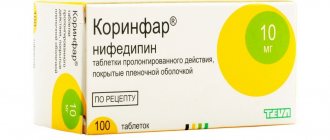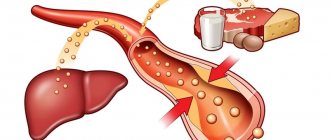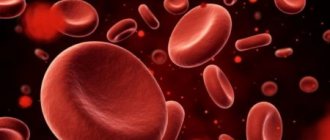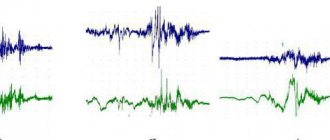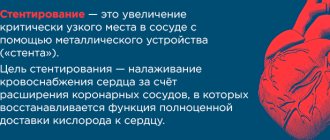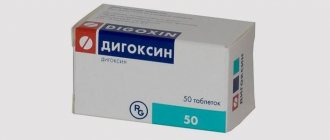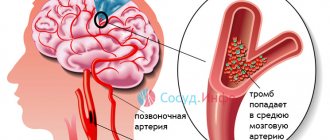Hemorrhoids recur extremely rarely after surgery; if medical recommendations are followed, relapse is excluded, which is one of the main advantages of surgical treatment.
Indications for surgical removal of hemorrhoids may include prolapsed hemorrhoids and frequent exacerbations of the disease, involvement of surrounding fatty tissue in the inflammatory process, the development of anemia due to frequent heavy bleeding, pinched and ischemic nodes. Hemorrhoidectomy is also prescribed in cases where the internal nodes are very pronounced and cannot be removed using minimally invasive methods.
Proper rehabilitation after hemorrhoidectomy promotes rapid recovery and prevents relapses
How long does the rehabilitation period last? Recovery after an open hemorrhoidectomy usually takes 4–6 weeks; with a closed hemorrhoidectomy, this period is reduced to three weeks. How to approach rehabilitation correctly, how to behave after hemorrhoid surgery and what to do to make the recovery go smoothly?
Pain syndrome in the first days is relieved by intramuscular administration of analgesics, then gradually switched to local agents.
How is the operation performed?
Surgery to remove hemorrhoids is called hemorrhoidectomy. It is carried out in the later stages of the pathology, when conservative therapy no longer helps. There are several types of this surgical intervention:
- Milligan-Morgan operation. This is the most common type of hemorrhoidectomy. The surgeon removes not only the hemorrhoids, but also the areas of skin and mucous membrane around them. Bleeding is stopped with a laser or electrocoagulator. This intervention is carried out in an open manner, that is, without sutures. The excised areas heal naturally.
- Ferguson's technique. The technique of this operation is similar to the previous one, but the intervention is carried out in a closed manner. After excision of the nodes and nearby tissues, catgut sutures are applied to the wounds. Subsequently, the threads dissolve on their own.
- Operation Parkes. This is the most gentle surgical intervention. With this operation, the surgeon excises only the hemorrhoids, but does not affect the mucous membrane. The intervention is carried out using an electric or laser scalpel. There is practically no pain after such manipulation.
- Longo method (staple operation). This intervention is effective for small lesions. During this operation, the excess part of the mucous membrane is cut and the prolapsed nodes are tightened. Sutures are placed using a special stapler. As a result, the blood supply to the nodes is disrupted and they become smaller.
- Strapping (Subbotin's operation). During this operation, the node is not excised, but bandaged with a special ring. This leads to disruption of the blood supply and the node falling off on its own.
Each patient needs to find out from the doctor how the operation was performed. The features of the rehabilitation period will depend on this.
How is Milligan-Morgan surgery performed for hemorrhoids?
Before the operation begins, the anesthesiologist examines the patient and talks with him, after which he determines the type of anesthesia. When removing nodes, intravenous anesthesia is mainly used, but in some cases, spinal anesthesia is preferred.
After choosing anesthesia, a catheter is placed in the patient’s vein and anesthesia is administered, and equipment is connected that will monitor blood pressure, pulse, respiration and blood oxygen saturation.
This type of surgery is performed on a special chair that resembles a gynecological one. The patient is in the Trendelenburg position. Further actions of the surgeon will depend on the type of operation.
Open hemorrhoidectomy
The operation algorithm is as follows:
- the area around the anal valve is injected with a local anesthetic;
- an anoscope is inserted into the anus to expand the surgical field;
- the mucous membrane of the anal canal is treated with an antiseptic and dried with a gauze swab;
- the internal assembly is grabbed with a clamp and brought out;
- the leg of the node, which contains the vessels that feed it, is stitched with catgut threads;
- the node is excised using an electrocoagulator, which minimizes bleeding, since the vessels are cauterized during the procedure;
- the surgical wound is covered with a thick gauze pad;
- Upon completion of the operation, a hemostatic sponge or gauze swab soaked in ointment is inserted into the anal canal for the next six hours.
Closed hemorrhoidectomy
The algorithm for this operation corresponds to the previous one, but at the end the surgical wound is sutured lengthwise with catgut threads, and only then a tampon with ointment is inserted into the anal canal.
Thanks to this, recovery after hemorrhoidectomy is easier, and complications are extremely rare.
Duration of rehabilitation
How long is the recovery period after surgery? Hemorrhoids are removed using various methods. The duration of rehabilitation depends on the traumatic nature of the surgical intervention:
- Milligan-Morgan technique. This is the most traumatic method of surgery. Complete healing of the excised areas occurs only after 2 months. During the recovery period, it is necessary to adhere to many lifestyle and dietary restrictions.
- Ferguson's operation. The closed method of surgery is considered more gentle than the open one. The recovery period takes from 14 to 30 days.
- Minimally invasive techniques. This type of intervention includes operations using the Parks, Longo and Subbotin method. They usually do not require a long hospital stay for the patient. Complete recovery of the body takes no more than 7-14 days.
The ability of tissues to regenerate is individual for different categories of patients. The duration of rehabilitation after surgery depends on the speed of wound healing. Hemorrhoids are completely cured only if the patient follows all the rules of asepsis and uses special disinfectant ointments and suppositories. As a rule, in young patients the mucous membrane recovers faster than in older patients.
Absolute and relative contraindications
As we have already said, radical surgery on hemorrhoids has a long recovery period and is also carried out under general anesthesia, so this type of treatment is not suitable for all patients.
Contraindications to radical removal of nodes are a number of conditions, namely:
- advanced age;
- primary and secondary immunodeficiencies;
- severe chronic diseases of the intestinal tube (Crohn's disease, specific non-ulcerative colitis and other types of intestinal inflammation);
- proctitis;
- blood diseases that are accompanied by a violation of the coagulation system;
- malignant neoplasms of any location;
- acute infectious diseases;
- pregnancy.
Possible complications
What can be the consequences after surgery to remove hemorrhoids? Most often, such surgical interventions are successful. However, many patients during the first time after surgery complain of the following unpleasant symptoms:
- Pain syndrome in the anal area. Unpleasant sensations are especially pronounced with the open method of intervention, when the wounds heal on their own. This often worries patients with a low pain threshold. After all, in the anus area there are many nerve endings. In this case, it is necessary to relieve discomfort with painkillers.
- Problems with urination. These manifestations are more common in male patients. Some patients experience urinary retention after surgery. This is especially common with epidural anesthesia. In this case, doctors insert a catheter into the urethra. This usually eliminates problems with urine output.
- Bleeding. This symptom is often observed with small wounds in the rectum. Damage usually occurs when solid feces pass through. In such cases, doctors recommend taking laxatives. Hemorrhoids after surgery can be complicated by prolonged and persistent bleeding. In this case, you need to visit a proctologist.
- Retention of stool. Constipation after surgery most often has a psychogenic origin. Patients are afraid of pain and avoid timely bowel movements. Under no circumstances should this be done. After all, feces can accumulate and create a serious problem with emptying. This leads to the formation of wounds and cracks.
- Purulent inflammation in the area of sutures. This consequence occurs due to poor personal hygiene, especially after visiting the toilet. Hemorrhoids after surgery are often complicated by inflammation of the rectum. In advanced cases, the infection can spread to the large intestine area. This occurs due to neglect of necessary hygiene procedures. Therefore, washing the anal area should be done after each bowel movement. If suppuration occurs, it is necessary to treat the wound with local antiseptics. In severe cases, the abscess must be opened.
How to avoid unpleasant consequences after surgery to remove hemorrhoids? Next, we will look in more detail at the features and rules of rehabilitation.
Possible complications in the postoperative period
A number of complications often occur in the postoperative period. For example, a feeling of discomfort and pain accompanies the postoperative period both with classical excision of nodes and with minimally invasive techniques with varying intensities. But bleeding, suture dehiscence, suppuration, and other complications are quite rare.
Pain
After surgery for hemorrhoids, severe discomfort and pain accompany almost all patients, especially in the first postoperative days. This is explained by the cessation of the effect of anesthesia. Sometimes the pain intensity is so high that it is impossible to do without narcotic analgesics: Omnopon, Promedol, Tramadol. If the pain is not so intense, Diclofenac, Rofecoxib, Nimesulide and other drugs are prescribed.
Proctologist Lev Bagdasaryan shares his experience.
Secondary infection
If inflammation occurs after surgery, which is most often caused by the addition of a secondary infection due to non-compliance with the rules of intimate hygiene, systemic and local antibacterial therapy is indicated for patients. Systemic drugs are broad-spectrum antibiotics. Medicines, after receiving the result of culture of discharge from the lesion and determining the sensitivity of the cultured microbe to an antibacterial drug, if necessary, are changed to a specific pathogenetic drug: Ampicillin, Levofloxacin, Gentamicin.
Local rinsing of sutures and wound surfaces with solutions of antiseptics such as Miramistin is used; if necessary, antibacterial liniments such as Levomekol are added.
Bleeding
Bleeding after hemorrhoid surgery is a fairly common complication of surgical treatment. Rectal bruising may develop immediately after the intervention or be a delayed complication. The reason is injury to the sutures from feces. Violation of the integrity of the mucous membrane varies in severity, this determines the intensity of bleeding from the anus.
If conventional hemostatic therapy fails to stop blood loss, repeated surgery with double suturing is necessary. After this, a hemostatic sponge soaked in adrenaline is used.
Proctologist Lev Bagdasaryan explained why he bleeds after hemorrhoid removal and what to do. Let's watch the video.
Urinary dysfunction
Sometimes, after removal of hemorrhoids, acute urinary retention occurs. Men are especially vulnerable in this case due to the anatomical features of the urethra. The problem can only be solved by temporary use of a catheter.
Narrowing of the anus
Quite often, after removal of a hemorrhoid, another complication occurs - narrowing of the anus. This is the result of a poorly performed surgical intervention with defective suturing. The patient experiences pain during defecation, a feeling of incomplete bowel movement, and the stool takes on a ribbon-like shape. The complication is dangerous due to the formation of anal stenosis, and therefore requires immediate treatment. Of the medications, Longidaza is the most preferred. In addition, the patient is required to follow a special diet and undergo a course of anal sphincter massage. If there is no result, anal plastic surgery is prescribed.
Rectum prolapse
This complication, the result of valve weakness, is very rare and occurs after resection of hemorrhoids of stage 4, advanced form, or against the background of the patient’s serious condition before surgery. The intensity of the identified complication suggests resolution of the problem with combined conservative treatment or reoperation. Auxiliary methods can be: massage, diet, and a set of physical exercises.
Fistulas
Holes that appear due to severe inflammation or suppuration of the anorectal area as a result of secondary infection are called fistulas. This is usually a delayed complication (several months after hemorrhoidectomy). The pathology is accompanied by pain, hyperthermia, deformation of the anus, and scarring of the walls of the rectum. Surgical treatment: plastic surgery. Rehabilitation is a week, after which the patient is discharged home.
Physical activity mode
When can I return to my previous physical activity after surgery? How to prevent recurrence of hemorrhoids? What to do after the operation if it was performed openly? These questions interest many patients.
If the operation was successful, then doctors allow the patient to get out of bed on the second day. The patient may also walk a little. But being in a sitting position is allowed much later, no earlier than 7 days after the removal of hemorrhoids. You can sit down only when postoperative pain completely disappears. It is recommended to use a cushion or inflatable ring for sitting. Such devices are needed in the first 2 weeks. Sitting on a hard surface is highly undesirable.
On the second day after surgery, it is recommended to do light exercises. Exercises are performed lying down or standing. In this case, you should not load your abdominal muscles. You can do stretching, turning from side to side, small movements with your arms and legs, as well as breathing exercises. This will help prevent venous complications, which are often observed in older patients.
You should avoid sitting or standing for long periods of time. The body needs moderate movement. Periodically you need to change your body position, otherwise stagnation of blood in the abdominal cavity may occur.
In the first 14 days after surgery, you should not lift anything weighing more than 2 kg. Classes in the gym can be resumed only after 3 months. In this case, strength exercises should be excluded forever, since excessive overexertion can provoke a relapse of the disease.
Nutrition
After hemorrhoidectomy and other types of surgery, a properly organized diet plays a large role in recovery. You should adhere to the following principles of proper nutrition:
- the patient's menu should contain dishes with a large number of mineral components and vitamins;
- you need to protect yourself from constipation, so it is important to drink about 2 liters of clean water per day;
- you need to eat in fractions (meals 5 times a day), and the portions should be small;
- You should not eat spicy foods or foods that cause increased gas formation.
From the second day after surgery, you should follow a strict diet, which will include the following permitted foods:
- scrambled eggs;
- porridge with water (millet, buckwheat);
- fermented milk products (yogurt, kefir);
- soup cooked in vegetable broth;
- herbal decoctions;
- weak tea;
- boiled meat or fish;
- fruits and vegetables containing fiber.
To quickly restore the body, it is important to remove additional stress from the digestive system, and the following foods should be excluded from the diet:
- whole milk;
- rice, semolina porridge;
- baked goods, chocolate, hot pastries;
- fatty types of meat, fish;
- carbonated, alcoholic drinks;
- rich meat broths;
- kiwi, raspberries, figs, strawberries;
- mushrooms;
- sauces, ketchup, hot seasonings, marinade;
- vegetables that contain coarse fiber (radish, garlic, fresh onions, sorrel, cucumbers, spinach);
- strong coffee, tea.
How to relieve pain
Patients often complain of discomfort during the first time after surgery to remove hemorrhoids. Pain after surgery may last from 3 to 10 days. In such cases, the use of non-steroidal anti-inflammatory drugs is indicated:
- "Ibuprofen";
- "Ketorola";
- "Nyza."
These medications are prescribed in tablet form to be taken orally. For severe pain syndrome, injectable forms of drugs are used.
Local suppositories and ointments are also prescribed after surgery to remove hemorrhoids:
- "Anestezol";
- "Aurobin";
- "Relief Advance";
- "Proctosan";
- "Procto Glivenol."
These drugs have a local anesthetic effect and help quickly relieve pain.
It is important to remember that analgesic drugs cannot be taken continuously. They are intended for symptomatic treatment and should only be used for pain. Otherwise, the body may become accustomed to the effects of analgesics and anesthetics, and large doses of medication will be required to achieve the desired effect.
In some cases, doctors recommend applying cold compresses to the rectal outlet area. This helps to constrict blood vessels and reduce pain.
Postoperative regimen
Immediately after the operation, the patient must remain in bed. The exact timing depends on the individual condition of the patient, the technique used for hemorrhoidectomy, and many other factors. On the first day you cannot get up, then the patient can move around. Rehabilitation after hemorrhoid surgery includes gentle exercise to stimulate blood flow and keep muscles toned. Kegel gymnastics is useful, at first it is done for 5 minutes a day, gradually increasing the duration and intensity of the exercises.
Classic hemorrhoidectomy involves the use of self-absorbing sutures, so there is no need to remove sutures. In the first week, the sterile dressing on the wounds is changed daily, damaged areas of the skin are treated with a gentle antiseptic. If suppuration or swelling appears, the patient receives antibiotics.
The patient must observe the rules of hygiene by washing with warm water and neutral soap after each visit to the toilet.
Recovery after hemorrhoid removal involves a balanced diet and complete abandonment of bad habits. An experienced smoker will have to forever give up not only regular cigarettes, but also their electronic analogues. Nicotine and combustion products have a destructive effect on blood vessels and can cause new growth of painful nodes.
Postoperative wound healing
In many cases, doctors use open surgery to rid the patient of hemorrhoids. What to do after surgery to prevent wound infection and restore the mucous membrane?
It is important to remember that with this method of operation the wound heals on its own, since sutures are not used. Therefore, it is necessary to use the following wound-healing drugs:
- Candles "Anuzol". These are rectal suppositories based on belladonna extract in combination with bismuth and zinc salts. They have astringent properties and promote the healing of postoperative wounds. This drug also acts as an antiseptic and analgesic. It is important to remember that Anuzol suppositories are contraindicated in patients with weak intestinal motility.
- Candles based on sea buckthorn oil. These suppositories disinfect wounds and promote rapid regeneration of the mucous membrane.
- Candles "Natalsid". These are suppositories based on seaweed extract. They promote the healing of cracks and prevent inflammation.
- Ointment "Levomekol". This product contains the antibiotic chloramphenicol, which has an antibacterial effect, as well as the substance methyluracil, which improves tissue nutrition. The drug acts as an antiseptic and wound healing agent.
- Ointment "Solcoseryl". This drug is made from the blood of cattle. It improves tissue metabolism and stimulates the production of collagen fibers. This helps speed up the healing of the excised areas.
It is necessary to complete the course of treatment with wound-healing ointments and suppositories after surgery. Hemorrhoids can reoccur if the wound in the rectum becomes infected or does not heal well.
Rehabilitation treatment
The patient's postoperative condition depends on the skill of the surgeon and the characteristics of the patient's body. If pain is felt, non-steroidal anti-inflammatory drugs will help. Their use is limited; no more than 3 tablets can be taken per day. If the pain is caused by damage to the nerve endings, lidocaine or novocaine blockades, prescribed by the attending physician, will help. At this time, local inflammation and minor suppuration in the area of the suture cannot be ruled out. Antibiotics of the penicillin or tetracycline series in the form of tablets, gels or injections will help remove unpleasant symptoms.
Treatment of hemorrhoids should be continued after removal of the nodes. During the rehabilitation period, drugs are prescribed that improve blood flow, prevent thrombosis, and strengthen the venous walls. It is possible to use capsules, gels, suppositories. Among the most useful products are the Gepatrombin G series, Proctosan, Anuzol. Medicines relieve unpleasant symptoms and speed up healing. Vitamin preparations, especially ascorbic acid, can enhance their effect. Advanced hemorrhoids, the treatment of which requires special attention, require complex treatment. The selected medications are used in courses, alternating them. This technique allows you to stimulate the body’s natural defenses and is not addictive.
Rectal suppositories will help get rid of constipation and discomfort in the anal area; after hemorrhoid surgery, they can be used in courses of 7-10 days. Suppositories with glycerin or propolis can normalize bowel movements. Relief suppositories with shark liver oil and homeopathic preparations based on belladonna and horse chestnut extract will help speed up healing and relieve pain and itching. Ointments and suppositories with methyluracil help well; they are available, easy to use, and sold without a prescription. Before using the drug, it is better to consult a proctologist, since some medications do not combine well with each other.
Simple folk remedies can treat inflammation, relieve itching and burning: lotions and baths with an aqueous solution of potassium permanganate or chamomile decoction. Procedures can be done daily, in the morning or before bed. Sea buckthorn oil can cope with dry skin and minor damage. It is gently rubbed into the anus area. For internal cracks or irritations, a tampon soaked in the drug is inserted into the sphincter for several hours. Hemorrhoidectomy eliminates aggressive agents that irritate the delicate mucosa. Before trying a new recipe from the field of traditional medicine, you should consult a proctologist.
Taking laxatives
To minimize rectal trauma, it is necessary to take medications to soften feces. Hard feces can injure the anal mucosa, which often causes inflammation and pain.
It is necessary to use laxative suppositories and ointments after surgery. Hemorrhoids often recur due to systematic constipation. The use of local glycerin-based products is indicated:
- "Norgilaxa";
- "Glycelax";
- "Glycerin."
Laxatives that irritate the intestines should not be used. They can cause mucosal damage and bleeding.
If local laxatives are ineffective, then oral medications are prescribed:
- "Senade";
- "Duphalac";
- "Normaze";
- "Guttalax."
Laxatives should be taken only as indicated and as prescribed by a doctor. Abuse of such drugs can lead to deterioration of intestinal motility.
In order to prevent constipation, you must also adhere to a diet. We will consider the rules of nutrition after hemorrhoidectomy below.
Recovery duration
Many people wonder how long does recovery take? After the surgical procedure, patients recover within 3-6 months. Recovery and duration of rehabilitation varies greatly and depends on the patient’s health, the severity of the disease, and the presence or absence of complications. In rare cases, the recovery period lasts a long time. If the wound heals very slowly, you should consult a doctor again.
Important! If other symptoms occur (fever, large amounts of purulent discharge, diarrhea, cracks), you need to visit a doctor. In some cases, this may indicate peritonitis.
Diet
Patients who have undergone surgery should eat at least 5-6 times a day. Food should be consumed in small quantities; overeating can lead to constipation. You need to drink at least 2-2.5 liters of liquid per day.
It is necessary to consume foods that do not cause constipation and the formation of hard stool. This will help avoid complications of hemorrhoids. What to eat after surgery? Proctologists recommend including the following foods in your diet:
- Vegetables: cabbage, zucchini, beets, carrots, tomatoes. These foods are rich in plant fiber and promote easy bowel movements.
- Fruits and berries: apples, oranges, pears, strawberries, peaches, apricots, dried fruits. They also help soften stools.
- Dietary meat: chicken breast, turkey fillet, rabbit. These products will help saturate your body with proteins. The meat must be boiled or steamed.
- Low-fat fish: pollock, hake, pike, pike perch. Such food contains many useful microelements that help heal the mucous membrane. Fish, like meat, must be boiled.
- Fermented milk products. Patients are recommended to consume kefir, fermented baked milk, yogurt, cottage cheese, and yogurt. These products prevent intestinal dysbiosis.
- Porridge. It is recommended to eat dishes made from buckwheat, oatmeal and millet cereals.
- Vegetable oil. This product is recommended for dressing vegetable salads. Vegetable (especially olive) oil makes bowel movements easier.
- Whole grain products. In the period after surgery, the consumption of flour products is limited. They must be replaced with whole grain bread, preferably white. This product will help compensate for the deficiency of B vitamins.
Avoid eating hard and hard to digest foods if you have hemorrhoids. The diet menu after surgery must regularly include pureed and chopped fresh and boiled vegetables. Eating such food minimizes trauma to the lower intestine.
The following foods should be completely excluded from the diet:
- canned food;
- pickled vegetables and mushrooms;
- fried foods;
- fatty meat and broths;
- meat, fish and vegetable semi-finished products;
- smoked meat and fish;
- any fast food;
- dishes made from pearl barley, rice and pasta;
- spicy seasonings;
- black bread;
- sweets;
- baked goods;
- ice cream;
- dishes from legumes;
- nuts;
- strong black tea;
- coffee.
Patients are strictly prohibited from drinking even weak alcohol. Violation of this rule can lead to bleeding from the anus, constipation, and subsequently to recurrence of hemorrhoids.
It is necessary to observe dietary restrictions for at least 2 months after hemorrhoidectomy. However, many proctologists recommend that patients adhere to a diet for life. Such a healthy diet serves as a good prevention of relapse of the disease.
Patient reviews
We bring to your attention real reviews from patients who underwent surgical treatment of hemorrhoids using the classical method.
Georgy, 38 years old: “Years of hard physical labor, frequent stress and hereditary predisposition took their toll: at the age of 28, I first felt the unpleasant symptoms of hemorrhoids. For a long time I self-medicated, using all sorts of folk remedies and advertised drugs, but the effect of the treatment was short-lived. I was overtaken by relapse after relapse, so when I had no strength to endure the torment, I turned to a proctologist, who diagnosed me with third-degree internal hemorrhoids and chronic anal fissure. The doctor recommended that I remove the hemorrhoids as soon as possible, as complications may arise. After weighing the pros and cons, I agreed. I don’t remember the illness for two years. Among the disadvantages, I would like to note, long rehabilitation and very painful first bowel movements after surgery. But the effect is worth it!”
Galina, 45 years old: “I first developed hemorrhoids during my second pregnancy, which was accompanied by severe constipation. For a long time I was observed by a proctologist and periodically took courses of antihemorrhoidal treatment. But over time, the periods of remission became shorter and shorter, and exacerbations occurred literally every two to three months. During acute attacks of hemorrhoids, I was bothered by heavy bleeding from the anus, so I already understood that I couldn’t do without surgery. Removing nodes is a very unpleasant operation, and the rehabilitation is long and painful, but I survived everything. Now for the past five years I have never had a relapse. Don’t be afraid of surgery, because this is the only way to get rid of hemorrhoids once and for all.”
Elena, 40 years old: “Most of my day is spent in a chair, so hemorrhoids did not take long to appear. I suffered with my problem for several years, and then I decided to have surgery and never regretted it, although in the postoperative period I had constipation, rather psychogenic, and severe pain. But three weeks later, my condition improved, the wound healed, the pain went away and bowel movements improved. After the operation, for three years now I have been following a diet and swimming (I read on one forum that swimming is good for hemorrhoids), and while sitting in a chair for a long time, I do warm-ups, as my doctor recommended. I would like to advise you - do not self-medicate, but immediately go to professionals. Only a proctologist can determine what treatment you need!”
Hygiene
As already mentioned, it is very important to prevent wounds from becoming infected during the treatment of hemorrhoids. Recovery after surgery should include not only the use of antiseptics, but also strict adherence to personal hygiene. Otherwise, wounds in the rectum may become inflamed and fester.
The following hygiene rules must be adhered to:
- The anal area should be washed in the morning and evening, as well as after each bowel movement.
- You should not use toilet paper in the first weeks after surgery. After defecation, you need to wash the anus with clean water. After the wounds have healed, you can use wet wipes.
- Washing should be done very carefully so as not to injure the mucous membrane.
- After hygiene procedures, the skin should be wiped with a soft cloth or napkin. Do not use a rough or hard towel.
- To wash, you need to use liquid soap or a special gel for intimate hygiene.
- The patient should always have wet wipes impregnated with an antibacterial composition with him.
For pain and inflammation in the anal area, it is useful to wash yourself with decoctions of anti-inflammatory herbs: chamomile, St. John's wort, oak bark. You can also do sitz baths with herbal remedies. However, such folk remedies can only be used after consulting a doctor.
How to prepare for hemorrhoid surgery?
Carrying out a radical operation requires careful preparation of the patient, the essence of which is to determine the general state of health and identify the presence of contraindications. Also, in the preoperative period, it is necessary to free the intestines from toxins and feces in order to improve the visibility of the surgical field and reduce the risk of complications.
Also, at the preliminary consultation, you need to inform the doctor whether you are taking any medications (insulin, aspirin, warfarin, etc.), since this may affect the course of the operation and the postoperative period.
Preoperative examination
At a preliminary consultation with the surgeon who will perform the operation, a plan for the preoperative examination of the patient is drawn up. The standard preoperative diagnostic algorithm is as follows:
- general clinical blood and urine tests;
- biochemical blood test, in particular determination of glucose levels, kidney and liver tests;
- coagulogram;
- blood for the Wasserman reaction (determines the presence of syphilis);
- electrocardiography;
- fluorography of the chest organs, if this study has not been performed on the patient in the last 12 months);
- anoscopy;
- sigmoidoscopy.
If necessary, ultrasound, computed tomography, irrigography and other studies can be performed.
Diet
Two to three days before surgery, it is necessary to limit the amount of plant fiber in the diet. The patient's menu should consist of easily digestible foods, for example, fermented milk products, steamed fish, and liquid soups.
On the eve of surgery, you can have breakfast and lunch, but you should skip dinner. The last meal should be no later than 14 hours, and water - 8 hours before surgery.
On the morning of the operation, you are prohibited from eating, drinking water, chewing gum, or cleaning your teeth.
Colon cleansing
On the day of surgery, you need to begin bowel cleansing procedures. To do this, at four o'clock in the afternoon you need to take a laxative, for example, Fortrans, Endofalk or Lavacol.
If laxatives are ineffective, cleansing enemas are used, for example Normacol or Enema wedge, which are given the night before and in the morning two to three hours before surgery.
Also, on the morning of surgery, the nurse will shave the hair in the area of the surgical site.
Relapse Prevention
For most patients, surgery to remove hemorrhoids results in a complete recovery. Most often, after surgery, patients experience stable remission. However, this does not exclude the possibility of recurrence of the disease. In some cases, patients have recurred hemorrhoids months or years after surgery. Doctors identify the following causes of relapse of the disease:
- frequent constipation;
- passive lifestyle;
- lifting weights;
- diet violations during the rehabilitation period;
- alcohol consumption.
We can conclude that the re-formation of hemorrhoids is most often associated with violations of the rules for the rehabilitation period. If the patient follows all the doctor’s recommendations during recovery after surgery, then relapses of the disease are extremely rare.
When can you start having sex after hemorrhoid removal?
If the rehabilitation period is uncomplicated, discomfort after surgery to remove hemorrhoids persists for 10 days. At the same time, a person probably won’t really want to have sex. Experts recommend having sexual intercourse no earlier than 25 days after hemorrhoid removal. A person moves actively during sex, and any physical activity can cause a relapse of the disease. It will take a long time for the anus to heal, so you should forget about anal sex for at least six months.
Reviews
Reviews from patients about recovery after surgery indicate that rehabilitation on average takes about 1.5-2 months. If all the doctors' recommendations were followed, no negative consequences of hemorrhoidectomy were observed in patients.
Most patients went through the recovery period safely. After the operation, the hemorrhoids no longer recurred. Surgical intervention led to stable remission.
However, if a person began excessive physical activity ahead of time, violated the rules of nutrition and hygiene, then this ended in complications. Such patients experienced prolonged postoperative pain and bleeding, inflammation in the wound area, and sometimes rectal prolapse. In these cases, patients had to undergo repeated treatment in a hospital setting.
Therefore, you should not rush to resume your normal lifestyle soon after surgery. Hemorrhoidectomy is a difficult operation. You need to give the body time to fully recover, and only after that begin normal physical activity and diet.
How long does it take for hemorrhoids to heal after surgery?
The recovery period after removal of hemorrhoids depends on the method of intervention performed, the presence of complications, and the physiological characteristics of the patient’s body. Modern proctologists (coloproctologists) practice minimally invasive techniques for eliminating hemorrhoids and classical excision of hemorrhoids.
Each minimally invasive operation is carried out using various physical, mechanical, chemical factors and has a short postoperative period after removal of hemorrhoids: from a couple of days to a couple of weeks, sometimes months.
Minimally invasive techniques
Innovative technologies are highly effective in the early stages of node formation. Recovery period:
- if disarterization is successfully carried out (alternate ligation of all vessels supplying the node under ultrasound control), there is practically no need for rehabilitation: a couple of hours of observation in a clinic or day hospital, sometimes for 2-3 days, immediately after discharge you can start working;
- ligation of the node with latex rings (the leg of the node is gradually pinched with a latex ring, which is placed on the base of the cone, the node dies, and is brought out naturally in a couple of weeks along with the ring) - basically, this is the rehabilitation period;
- sclerotherapy (destroying of the node under the influence of a sclerosant drug injected directly into the node) involves outpatient rehabilitation for two to three days, it is important to follow a diet and control the regularity of bowel movements;
- coagulation with infrared light (cauterization of the node) - two to three hours of postoperative observation by a doctor and a couple of days of rehabilitation at home, it is assumed that the patient can lead a normal lifestyle, adhering to a gentle diet for the first days and avoiding heavy physical activity for a week;
- laser coagulation (removal of a node with a focused laser beam) - discharge on the day of surgery after an hour of observation by a doctor, no special restrictions, normal lifestyle, with the exception of lifting weights during the first week after the intervention;
- cryodestruction (freezing the node with liquid nitrogen) - rehabilitation takes no more than 10 days, it is possible to prescribe immunity-stimulating drugs to speed up the epithelization process: Posterizan, Methyluracil, Trichopolum, a special diet.
The eternal question: minimally invasive or surgical treatment? Lev Bagdasaryan answers.
Radical operations
Hemorrhoidectomy - complete excision of hemorrhoids according to Milligan-Morgan or hemorrhoidopexy according to Longo with tightening of hemorrhoids inside the rectal canal. These are inpatient traumatic operations, which are usually performed under general anesthesia and require mandatory medical supervision in the postoperative period.
Rehabilitation is long. Longo's operation is less traumatic, complications are quite rare, so the recovery period ranges from three days to a week. Milligan-Morgan intervention involves rehabilitation for a month, sometimes longer.
Indications for hemorrhoidectomy and its modern varieties
Open hemorrhoidectomy according to Milligan-Morgan
Simply being diagnosed with hemorrhoids is not enough to warrant surgery. It is resorted to only in stage 3 or 4 of the disease with large external nodes. Another condition for using the surgical method is the lack of effect from minimally invasive techniques or the impossibility of performing them.
Modern proctological surgeons most often use closed and open hemorrhoidectomy, performing it with a regular scalpel, using diathermocoagulation (an electric knife that cauterizes tissue), a laser or special ultrasonic scissors.
Let's take a closer look at modern surgical options. Hemorrhoidectomy can be:
- Open. It is often used when hemorrhoids are combined with fistulas or fissures in the anal canal.
- Closed. This type of operation is indicated in cases where it is impossible to determine a clear boundary between the external and internal cones. Open and closed hemorrhoidectomy are variations of the Milligan-Morgan operation, the “gold standard” of proctology.
- Submucosa. This technique, in addition to removing nodes, makes it possible to ideally restore the intestinal mucosa. In this case, there is no deformation or tension. And the stump at the site of the removed node is located in the submucosal layer, that is, in the thickness of the intestinal wall, without protruding above its surface.
- Hardware. It is performed using special devices LigaSure and UltraCision. This type of operation gives very good results in 96.4% of patients.
Separately, it should be said about one more surgical technique. This is the so-called stapled hemorrhoidopexy, or Longo operation. It is distinguished from all the listed methods by the preservation of hemorrhoids. They are only pulled up and fixed to the intestinal wall. In this case, a part of the intestinal mucosa is excised in a circle along with the submucosal layer, and a mechanical suture is applied to join the edges of the wound.
As for postoperative complications, they occur with any surgical technique.
Rehabilitation rules
If you have hemorrhoids, you need to constantly bandage the sore spot, lead an active lifestyle and remove negative risk factors. Some medications have a negative effect on non-healing hemorrhoids (opioid analgesics, barbiturates, or benzodiszepines).
Standard hemorrhoidectomy
The patient is advised to change the outer gauze daily as needed. Laxatives can be used to facilitate the first act of bowel movement. Non-narcotic analgesics may be prescribed to relieve pain. After the procedure, moderate pain occurs, which is significantly aggravated by defecation.
Sitting in a warm bath immediately after bowel movement can help relieve pain. Sitting in the bath for a long time is not recommended. Glyceryl nitrate may reduce pain, but it can cause severe headaches.
Longo hemorrhoidopexy and latex ligation
In this case, the patient also needs to change the outer gauze daily as needed. Laxative medications can be used to make bowel movements more comfortable. Pain is usually most severe in the first 72 hours after the procedure and can be relieved with nonsteroidal anti-inflammatory drugs (NSAIDs). The pain does not get worse after defecation.
Important! After 4-7 weeks, a repeat rectal examination is required to rule out stenosis.
Modern methods of removing hemorrhoids
The proctologist makes a choice in favor of one or another type of surgical treatment of hemorrhoids, depending on the type of pathological changes and associated problems. Let's consider the features of some modern methods of removing hemorrhoids, which are used most often.
Hal Rar method for removing hemorrhoids
Quite gentle, but at the same time radical technology for the treatment of hemorrhoids. The operation using the Hal Rar method involves stopping the blood supply to hemorrhoids by ligating the vessels that feed them. After this, necrotization of the cones occurs and their independent rejection from the wall of the rectum.
This technology manages to eliminate the root cause of the disease. The patient does not experience recurrence of hemorrhoids after surgery.
After sedation of the patient and analgesic measures, the surgeon performs the following manipulations:
1. Insertion of an anoscope with a Doppler sensor into the rectum. The sensor detects the pulsation of the feeding artery, and the surgeon receives information about the exact localization of the pathogenic area. 2. Stitching of all hemorrhoidal arteries with vicryl. As a result, the blood supply to the cones stops. 3. Lifting of the internal node - sutures tighten and fix the node inside the rectum.
Endoscopic surgery is performed on an outpatient basis or in a hospital. The entire procedure takes about 40 minutes. The patient does not require a stay in intensive care; as a rule, he is sent home on the same day.
Ligation of hemorrhoids with latex rings
The technique of ligating a vascular bundle with latex rings is based on the same principle of stopping the blood supply to hemorrhoids as described above.
To carry out the operation, you need a special device - a ligator, with which you put on a latex ring. The gradual narrowing of the lumen of the ring promotes gentle tissue transformation. Thanks to this, the entire process takes place without inflammatory reactions, and the node stump is formed reliably, without the danger of late bleeding.
14-17 days after the operation, complete replacement of the vascular connective tissue occurs, necrosis and subsequent rejection of the hemorrhoid develops.
Latex ligation of hemorrhoids is performed without anesthesia. The patient lies on his back on a chair with his legs apart. How is surgery to remove hemorrhoids performed?
1. An anoscope is inserted into the rectum and fixed. 2. A ligator is installed into the lumen of the anoscope. 3. The hemorrhoidal lump is captured. 4. Pull the knot into the head of the ligator. 5. Tighten the vascular pedicle with a latex ring.
It usually takes about 10 minutes to process one node. Upon completion of all manipulations, the patient spends about two hours in the clinic under the supervision of doctors, and then he is sent home.
Sclerosation of hemorrhoids
During the operation “sclerotherapy of hemorrhoids” the therapeutic effect is achieved by introducing a special substance into the pedicle of the feeding vessel. After this, the local blood supply is disrupted, which causes the artery to stick together and the hemorrhoidal lump to die.
The operation consists of the subsequent performance of certain manipulations:
1. The patient takes a position on the proctology chair. 2. An anoscope is inserted into the rectum to identify hemorrhoidal protrusions. 3. Using a special syringe, approximately 2 ml of sclerosing solution is injected into the base of the lump on the lip of 1-1.5 cm. The pallor of the tissue and the enlargement of the node are visually determined. 4. The syringe needle is slowly withdrawn to avoid leakage of the solution.
No more than two hemorrhoids can be sclerosed at the same time. A larger number of injections can cause severe pain during the rehabilitation period. For multiple hemorrhoids, the next operation is performed after 3-4 weeks.
Ferguson's operation for hemorrhoids
The Ferguson method is used when all conservative or hardware methods have not brought the desired result. The operation is performed only in a hospital setting under general or spinal anesthesia.
After the patient takes the required position on the operating table and anesthesia begins, the surgeon begins the operation:
1. The anal area is treated with an antiseptic solution. 2. A local anesthetic is injected to relax the anal sphincter. 3. To identify prolapsed nodes, a tampon is inserted into the anus and immediately removed. 4. A rectal speculum is installed in the anus. 5. The base of the hemorrhoid is sutured with a silk ligature, the thread is not cut. 6. Clamps hold the knot and cut its base. The tissues are separated and the muscles are retracted. 7. The stem of the hemorrhoidal cone is tied with the remaining thread and cut off. 8. The stump is sutured with a continuous catgut suture. 9. The remaining nodes are also processed. 10. The anal portion of the rectum is tamponed.
The Ferguson operation lasts from 30 to 60 minutes, depending on the severity of the disease.
Surgery for hemorrhoids using the Surgitron device
The operation of the Surgitron hemorrhoid removal device is based on the conversion of electric current into high-frequency electric waves. The working tip acts as a radio knife, which instantly evaporates damaged cells.
The maximum hyperthermic effect is carried out so lightning fast that there is no burn damage to healthy tissue. Simultaneously with the melting of the hemorrhoidal cone, diathermic soldering of the blood vessels occurs.
With the help of Surgiton, you can remove not only hemorrhoids. Proctologists use it in the treatment of anal fissures, polyps, neoplasms, paraproctitis.
Removal of hemorrhoids with laser
The therapeutic effect of laser has found its application in surgical proctology. High-frequency laser radiation can burn or cut off hemorrhoids.
The use of laser is widely advertised and recommended as an effective and painless procedure. At the same time, this method has many negative reviews due to the very painful recovery period. Why is this happening? There are several nuances here. It all depends on the method of performing the operation, the apparatus, and the wavelength.
In some cases, a laser is used for hemorrhoidectomy - in simple terms, a laser beam is used to cut off the node, like a scalpel. The pain during the recovery period with this option will be very high, even higher than with a conventional hemorrhoidectomy. The recovery period itself in this case lasts up to two months.
Another option for using a laser is vaporization, i.e. evaporation of the internal contents of hemorrhoids. When performing such an operation, the feeding artery of the node is first tightened, then laser vaporization of the hemorrhoid occurs through a small puncture of the mucous membrane. Subsequently, the cavernous tissue of the nodes is replaced by connective tissue.
When performing this manipulation, the heating temperature inside the unit is of decisive importance. It depends on the power, laser wavelength and other parameters.
In some cases, this temperature reaches 1200⁰C, which causes not only the death of the node, but also a charring burn of surrounding tissues. The pain of rehabilitation in this case will also be extremely high.
With correctly selected laser radiation power, there is no significant damage to surrounding tissues, and the rehabilitation period is minimal.
Carefully choose a clinic and operating doctor, and ask your surgeon questions about the progress of the upcoming operation. For more information about laser vaporization of hemorrhoids, as well as a comparison with other methods, see this video:
What do the doctor's say
Doctors recommend not to delay treatment under any circumstances. The sooner the patient pays attention to the symptoms, the better.
In this case, treatment will be carried out using minimally invasive methods, which will facilitate postoperative recovery, and removal will not be so painful.
Women are advised to treat hemorrhoids after having children, so during this process, due to the efforts that the woman makes, the hemorrhoid may form again.
How to get better after hemorrhoid surgery:
- This is not allowed on the first day
- Before the removal operation, you need to stick to a diet and watch your stool in order to heal.
